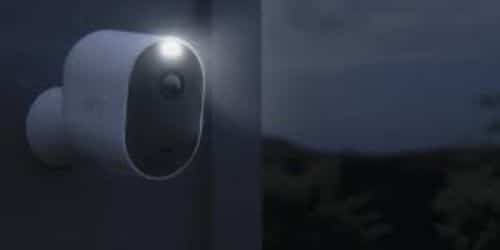With advanced technology and increasing concerns about safety and security, surveillance systems have become an integral part of our lives. Whether you’re a homeowner, a business owner, or simply seeking peace of mind, finding the best video surveillance system camera in 2023 is crucial to safeguarding your premises and loved ones. With the ever-evolving landscape of surveillance technology, it can be overwhelming to navigate through the multitude of options available on the market today. That’s why we’ve compiled this comprehensive buying guide to help you make an informed decision. Our focus is on highlighting the top surveillance system options that have emerged as leaders in 2023, ensuring you stay up to date with the latest advancements.
What Is the Surveillance System?
A surveillance system is a collection of devices and technologies used to monitor and record activities in a particular area or location. It captures and documents visual or audio information for surveillance, security, or monitoring. Individuals and organizations can use surveillance systems in various settings, including homes, businesses, public spaces, as well as government facilities. Surveillance systems play a crucial role in enhancing security, deterring criminal activities, and providing evidence in the event of incidents or investigations. However, it’s important to use surveillance systems responsibly and in compliance with local laws and regulations regarding privacy and data protection. From high-definition cameras with enhanced night vision capabilities to cutting-edge artificial intelligence-powered systems, we’ll explore the features, functionalities, and performance of the best surveillance solutions.
The primary components of a surveillance system typically include cameras, recording devices, and monitoring equipment. The following is a brief explanation of each component:
#1. Cameras
Surveillance cameras are used to capture visual information. They come in different types, such as fixed cameras that are mounted in a specific direction, dome cameras that provide a 360-degree view, PTZ (pan-tilt-zoom) cameras that can be remotely controlled to change their viewing angle, and covert cameras that are disguised to blend into the environment.
#2. Recording Devices
Surveillance systems include devices for recording and storing the captured footage. This can be a digital video recorder (DVR), network video recorder (NVR), or cloud-based storage. The recording devices store the video data for later review, analysis, or evidence purposes.
#3. Monitoring Equipment
This refers to the devices used to view live or recorded video footage. Whether it’s a monitor, a computer, a smartphone, or a tablet. really makes no difference. Users can monitor the surveillance system in real-time or review recorded footage to identify any incidents or activities of interest.
Features of Surveillance System
Surveillance systems can have various additional features and technologies depending on their purpose and complexity. The following are some common features of a surveillance system:
- Motion detection: There are cameras with motion sensors to detect movement and also trigger recordings or alerts.
- Night vision: Infrared technology allows cameras to capture clear images in low-light or no-light conditions.
- Remote access: Many modern surveillance systems provide remote access via mobile apps or web interfaces, enabling users to monitor their premises from anywhere.
- Alerts and notifications: Surveillance systems can be programmed to send alerts or notifications to the user when specific events occur, such as motion detection or unauthorized access.
- Analytics and artificial intelligence: Advanced surveillance systems may incorporate analytics as well as AI technologies for features like facial recognition, object tracking, or behavior analysis.
How Does a Home Surveillance System Work?
A home surveillance system typically consists of several components that work together to monitor and record activities in and around a house. Generally, there are specific home surveillance systems that have additional features and capabilities, such as infrared night vision, two-way audio, facial recognition, or integration with other smart home devices. The setup and functionality of a surveillance system can vary based on the chosen equipment and the homeowner’s specific requirements. The following is an overview of how a typical home surveillance system works:
#1. Cameras
The system includes one or more cameras strategically placed in and around the house. These cameras can be wired or wireless and may vary in their features and capabilities. Some common types of cameras used in home surveillance systems include dome cameras, bullet cameras, as well as PTZ (pan-tilt-zoom) cameras.
#2. Power and Connectivity
Cameras require a power source to operate. Wired cameras are typically connected to a power outlet using cables, while wireless cameras may use batteries or be plugged into power sources. Cameras also need connectivity to transmit video footage to a central recording device or the cloud.
#3. Recording Device
The surveillance system typically includes a recording device, such as a digital video recorder (DVR) or a network video recorder (NVR). The cameras feed their video signals to this device for storage and playback. Some modern systems may also utilize cloud-based storage for recording and accessing footage remotely.
#4. Video Transmission
The cameras capture video footage and transmit it to the recording device using either wired or wireless connections. Wired cameras may use Ethernet cables, while wireless cameras use Wi-Fi or other wireless protocols. The transmission can be live streaming or event-triggered recording, depending on the system’s configuration.
#5. Monitoring and Control
Users can monitor the surveillance system through various means. This includes using dedicated monitors or connecting the system to a television or computer for viewing life or recorded footage. Additionally, some systems offer remote monitoring capabilities, allowing users to access and control the system using smartphone apps or web browsers.
#6. Motion Detection and Alerts
Many home surveillance systems have motion sensors that can detect movement within their field of view. When motion is detected, the system can be programmed to send alerts to the homeowner via notifications, email, or text messages. This feature enables users to be promptly notified of any potential security breaches.
#7. Storage and Retrieval
The recorded video footage is stored either locally on the recording device or in the cloud. Local storage devices like DVRs or NVRs often use hard drives to store video data. Cloud-based storage allows for remote access to the footage from anywhere with an internet connection. Depending on the system’s settings, recorded footage can be stored for a certain period before being overwritten or deleted.
How Much Should a Surveillance System Cost?
The average cost of a surveillance system is about $500- $1000. Generally, the equipment costs about 4199-$400, installation and activation costs about $50-$200, and the monthly monitoring service costs about $25-$50 on average.
What Is the Most Common Surveillance?
The most common type of surveillance used today is video surveillance. This simply refers to the employment of specialized security cameras to record footage and identify events such as the arrival and departure of vehicles on a property.
Surveillance System Camera
A surveillance system camera, also known as a security camera or a CCTV camera (closed-circuit television), is a device specifically designed to capture video footage for surveillance and security purposes. These cameras are a key component of surveillance systems and are used to monitor and record activities in various environments, including homes, businesses, public spaces, and government facilities. It’s important to choose the right surveillance camera based on the specific surveillance requirements, the environment in which it will be installed, and the desired features and functionalities. Additionally, compliance with applicable laws and regulations related to privacy and data protection should be considered when deploying surveillance system cameras. The following are some key characteristics of a surveillance system camera:
#1. Types of Surveillance Cameras
- Dome Cameras: These cameras have a dome-shaped housing and are commonly used in indoor settings. Generally, they offer a wide viewing angle and are often used for general surveillance purposes.
- Bullet Cameras: Bullet cameras are cylindrical and are typically used for outdoor surveillance. They are famous for two things, their long-range capabilities and weatherproof design.
- PTZ Cameras: PTZ (pan-tilt-zoom) cameras are versatile and can be remotely controlled to pan, tilt, and zoom, allowing operators to focus on specific areas or objects of interest.
- Covert Cameras: Whether you call this one covert camera, hidden camera, or spy camera, makes no difference, because they are the same thing. They have fancy names because are appear discreet and blend into the environment. You can disguise this camera as an everyday object or embed it in other devices.
- Panoramic Cameras: Panoramic cameras or 360-degree cameras, provide a wide-angle view, covering a large area with a single camera. Generally, they are useful for monitoring open spaces or large rooms.
#2. Resolution
Surveillance cameras come in various resolutions, typically measured in megapixels (MP). Higher-resolution cameras capture more detailed and clearer images. Common resolutions include 1080p (2MP), 4K (8MP), and even higher resolutions for advanced systems.
#3. Night Vision
Many surveillance cameras have infrared (IR) LEDs or other low-light technologies to capture clear images in low-light or no-light conditions. These cameras switch to black-and-white mode and use IR illumination to enhance visibility in the dark.
#4. Wired vs. Wireless
Surveillance cameras can be either wired or wireless. Wired cameras require physical cables for power and video transmission, whereas wireless cameras use Wi-Fi or other wireless technologies for connectivity, reducing the need for extensive cabling.
#5. Power Source
Cameras can be powered through various means, such as electrical outlets, power over Ethernet (PoE) for wired cameras, or batteries for wireless cameras.
#6. Features and Capabilities
Advanced surveillance cameras may include additional features like motion detection, two-way audio communication, facial recognition, built-in storage, remote access capabilities, as well as integration with other security systems or smart home devices.
Security & Surveillance System
A security and surveillance system is a comprehensive setup that combines various technologies and components to ensure the safety and protection of people, property, and assets. It typically incorporates elements of both physical security and video surveillance to monitor, detect, and respond to potential threats. It’s important to design and configure a security and surveillance system based on the specific needs and risks of the environment. Considerations include the layout of the premises, security objectives, applicable regulations, and privacy concerns. Regular maintenance and testing of the system ensure its reliability and effectiveness over time. The following are the key components and features commonly found in a security and surveillance system:
#1. Video Surveillance
The system includes cameras strategically placed on and around the premises to capture video footage. Generally, these cameras can be fixed or have pan-tilt-zoom (PTZ) capabilities for flexible monitoring. Users can transmit the video feed to recording devices or a video management system (VMS) for storage and monitoring.
#2. Intrusion Detection
Sensors, such as motion detectors, door or window contacts, glass-break detectors, or pressure mats, are deployed to detect unauthorized entry or intrusion attempts. When triggered, these sensors send signals to the system’s control panel to initiate appropriate responses.
#3. Access Control
Access control measures, such as card readers, keypads, or biometric systems, are employed to regulate and manage entry to specific areas or buildings. This ensures that only individuals with authorization can enter certain areas.
#4. Alarms and Alerts
Security systems usually come with audible alarms and visual indicators to alert occupants and deter intruders. These alarms can be triggered by motion detection, unauthorized access, or other predefined events. In addition, alerts can be sent to security personnel or property owners via notifications, emails, or SMS messages.
#5. Security Monitoring
The system includes a central monitoring station or security personnel responsible for monitoring the video feeds and alarm events in real-time. They can respond to incidents, assess threats, and dispatch appropriate resources, such as security guards or emergency services, if necessary.
#6. Integration with Security Devices
Security and surveillance systems can integrate with other security devices and systems to enhance their overall effectiveness. This may include integrating with fire alarms, intercom systems, emergency lighting, or public address systems to ensure a coordinated response during emergencies.
#7. Remote Monitoring and Management
Many modern security and surveillance systems provide remote monitoring and management capabilities. This allows users to access the system, view live video feeds, manage access control, and receive alerts remotely using smartphones, tablets, or computers connected to the internet.
#8. Video Analytics and AI
Advanced security and surveillance systems can incorporate video analytics and artificial intelligence (AI) technologies. These features enable automated detection and analysis of specific events, such as facial recognition, object tracking, or abnormal behavior detection. Video analytics can improve response times and enable proactive security measures.
Video Surveillance System
A video surveillance system, also known as a CCTV (closed-circuit television) system, is a comprehensive setup that uses cameras, recording devices, and monitoring equipment to capture, store, and monitor video footage for surveillance and security purposes. It is commonly used in various settings, including homes, businesses, public areas, and institutions. Video surveillance systems provide an essential tool for deterring crime, monitoring activities, and providing evidence in the event of incidents or investigations. When deploying a video surveillance system, it’s important to consider factors such as camera placement, video storage capacity, data protection measures, and compliance with privacy laws and regulations. The following is an overview of the components and functionality of a typical video surveillance system:
#1. Cameras
Video surveillance systems include multiple cameras strategically placed in specific locations to capture video footage. These cameras can be fixed or have pan-tilt-zoom (PTZ) capabilities, allowing operators to remotely adjust their viewing angles. The cameras can be connected to the recording devices using wired or wireless connections.
#2. Recording Devices
The cameras send the video they have captured to recording devices for storage. These devices can be digital video recorders (DVRs), network video recorders (NVRs), or cloud-based storage systems. DVRs and NVRs typically have built-in hard drives to store the video footage locally, while cloud-based systems store the footage on remote servers accessible via the Internet.
#3. Monitors and Viewing Equipment
Video surveillance systems require monitors or displays to view the live video feed or review the recorded footage. Monitors can be dedicated display units, computer screens, or even mobile devices. Depending on the system, multiple monitors can be connected to view video from different cameras simultaneously.
#4. Video Transmission
Cameras capture video footage, which is then transmitted to the recording devices or monitoring equipment. Wired cameras use cables, such as coaxial or Ethernet cables, for video transmission. Wireless cameras utilize Wi-Fi or other wireless protocols to transmit the video feed.
#5. Video Management Software (VMS
Some video surveillance systems incorporate video management software, which provides additional functionalities for managing and organizing video footage. VMS enables users to search, playback, and analyze recorded video, set up motion detection, configure camera settings, and integrate with other security systems.
#6. Motion Detection and Alerts
Video surveillance systems often include motion-detection capabilities. When motion is detected in the camera’s field of view, the system can trigger alerts, such as sounding an alarm, sending notifications to the user’s mobile device, or activating specific actions or responses.
#7. Remote Access
Many modern video surveillance systems offer remote access capabilities. This allows users to access the live video feed or recorded footage from anywhere using smartphones, tablets, or computers connected to the internet. Remote access enhances monitoring capabilities and facilitates a quick response to potential security incidents.
#8. Integration with Other Security Systems
Video surveillance systems can be integrated with other security systems, such as access control systems, alarms, and sensors. Integration allows for a more comprehensive security solution by enabling cross-system notifications and automated responses based on specific events or triggers.
How Do You Know If You Are Under Surveillance?
In the case of physical surveillance, if you run into the same person again and again in various locations, then you may be under surveillance. You may also be under-watched if the person’s demeanor suddenly changes or they act out of character.
What Are the 3 Types of Surveillance?
The three types of surveillance are direct, pre-constructive, and reconstructive
Is Surveillance Legal in the US?
Yes, surveillance is legal in the US. Conducting surveillance means watching someone or something in order to gain information. Law enforcement agencies frequently utilize surveillance as a tool in their quest for information and evidence. Overt surveillance is conducted with the target’s knowledge, while covert surveillance is done in secret.
- VIDEO SURVEILLANCE: Meaning, Software & All You Need
- SECURITY CAMERAS FOR BUSINESS: Best Security Cameras and Its Cost
- SECURITY MONITORING: Definition, Process, Tools & Importance






